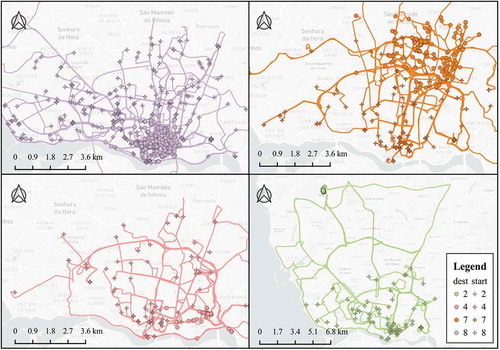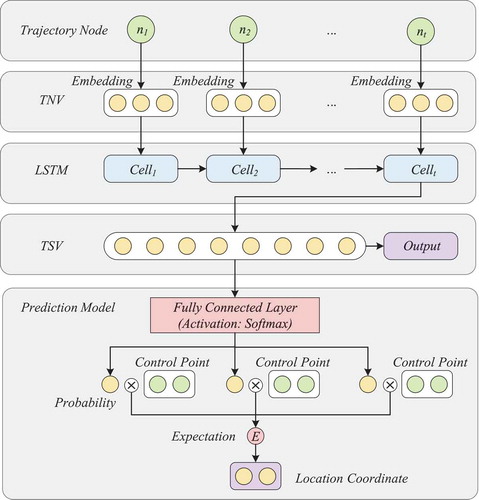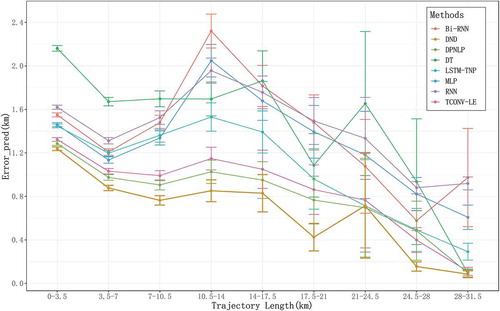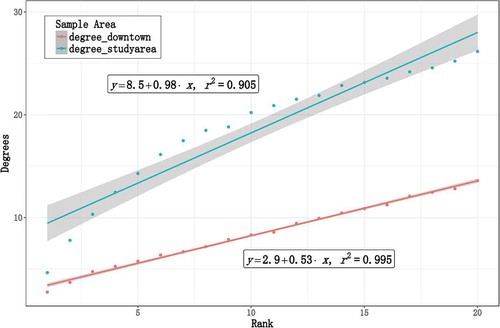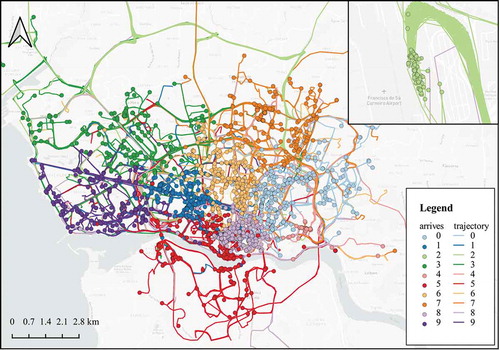Figures & data
Figure 2. Dependencies strength between neighbouring nodes. If someone needs to go from A to X, he must first go through B or C. From the perspective of graph theory, the cost from A to X is 2 degrees and the cost from B to X is 1 degree. It reflects that the dependencies strength between B and X is stronger than A and X.
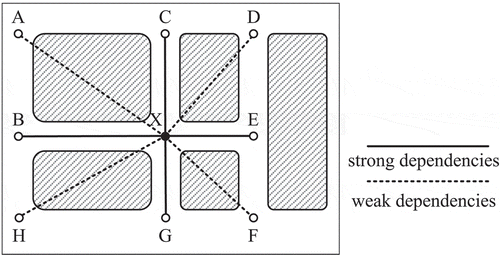
Figure 5. An example of destination prediction under six different completion scenarios of a full trajectory. Control points with a probability greater than 0.5% are labelled. As the completion increase, the predicted destination of the prefixes is gradually approaching the real destination. (a) Trajectory completion: 0%. (b) Trajectory completion: 8%. (c) Trajectory completion: 43%. (d) Trajectory completion: 68%. (e) Trajectory completion: 82%. (f) Trajectory completion: 98%.
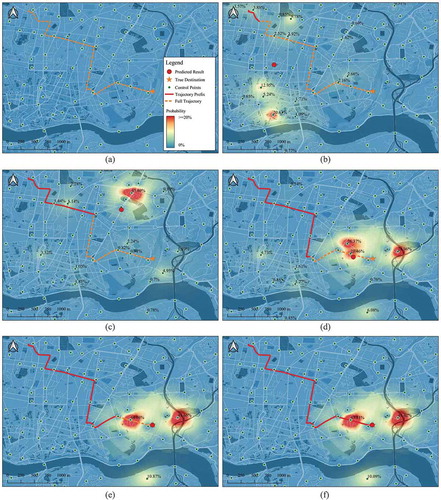
Table 1. Models for performance comparison.
Table 2. Performance comparison, both the units of and
are kilometres.
Figure 11. Start point distribution, destination distribution and road selection patterns of different TSV clustering results.
